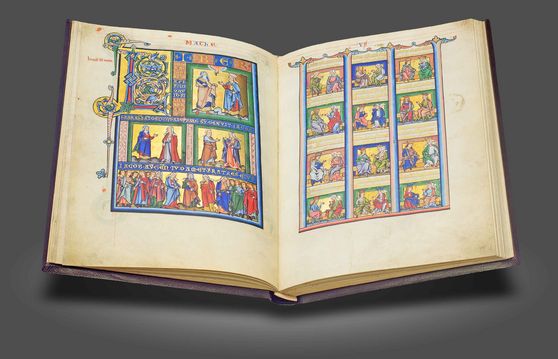The Most Beautiful Gospel Books
Gospel books and Perikopes (also known as Evangeliaries or Gospel Lectionaries) were among the most valuable liturgical books in the Middle Ages, as they were regarded as sacramental embodiments of Christ, who was given a presence in the church through them. They were also the basis of the Gospel readings during Mass, as they contain the texts of the four Gospels, i.e. the stories about the earthly life of Jesus in the New Testament of the Bible.
Medieval Gospel books contain these in full and in their canonical order: Matthew, Mark, Luke and John. Pericope books, on the other hand, only contain the excerpts from the Gospels (pericopes) that are read out - in the order of the liturgical church year, which begins with the birth of Christ, i.e. Christmas. Both book genres were the standard for the Gospel readings until the 13th century and could be found throughout the Latin West. The religious significance of the books was reflected in their design, resulting in breathtakingly magnificent manuscripts. Rulers such as Emperor Henry II or Duke Henry the Lion also used these religious masterpieces for power politics, for example by having themselves personally crowned by God in them.
A UNESCO World Heritage document and arguably the most famous manuscript in the world: intricate interlace and Celtic knots in a masterpiece of insular illumination that is both mystical and humorous
Monastery of Iona (United Kingdom) — Ca. 800
Experience more
Commissioned by Charlemagne and used as an Imperial Insignia for centuries: each German emperor swore his oath with his hand on this book made of gold and purple
Court School of Charlemagne, Aachen (Germany) — Shortly before 800
Experience more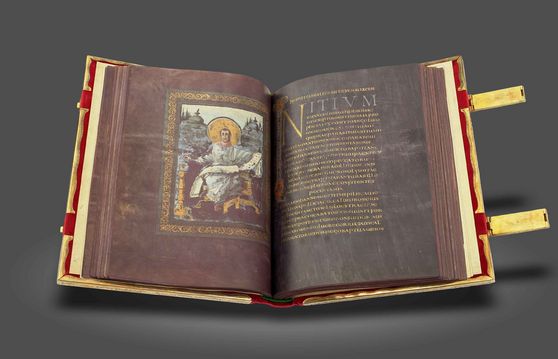
A precious masterpiece from the famous scriptorium in Echternach: the stories of the Bible and the martyrdom of St. Stephen in a luminous luxury manuscript with pastel miniatures and golden initials
Echternach Abbey (Luxembourg) — Ca. 1030
Experience more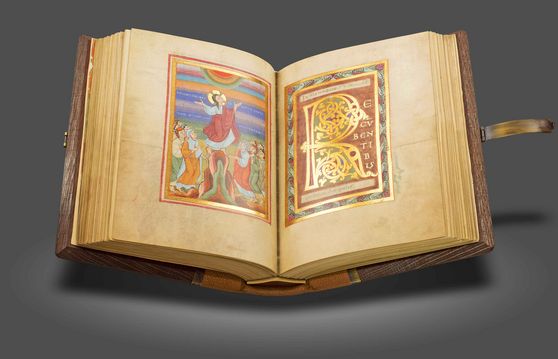
The oldest manuscript from the famous monastery of Reichenau and a UNESCO World Heritage Document today: a splendid Ottonian evangeliary in purple, gold and silver commissioned by Archbishop Gero of Cologne
Monastery of Reichenau (Germany) — Ca. 969
Experience more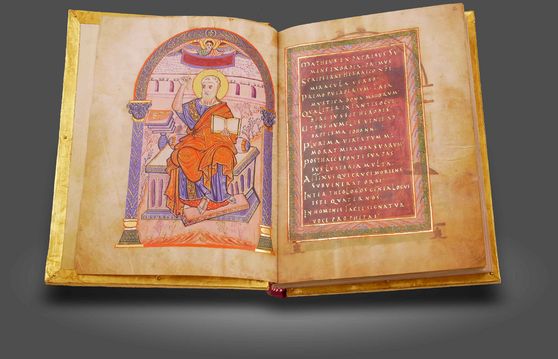
Held in the hands of Emperor Charlemagne, adorned with a masterful ivory cover and still "in use" today in the Vatican: a world famous highlight of Carolingian book art of the court school, written entirely in gold
Aachen (Germany) — Ca. 810
Experience more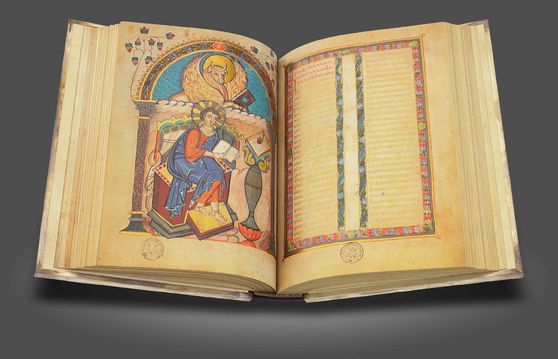
Auctioned for 32.5 million D-marks, it was the most expensive work of art in the world for a long time: an opulently illuminated masterpiece of the German Romanesque period, created for Duke Henry the Lion, the great rival of Emperor Barbarossa
Helmarshausen (Germany) — Around 1175–1188
Experience more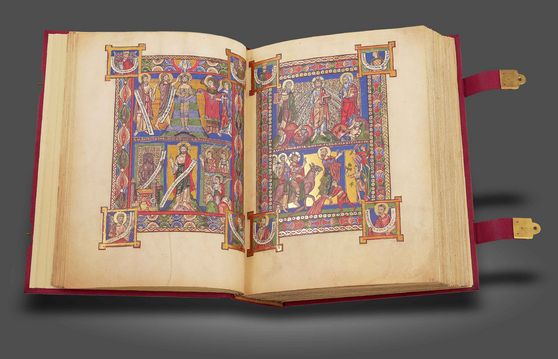
Book art for eternity adorned with glowing carpet pages and fabulous interlace initials: the birth of Insular illumination and a style-defining masterpiece for centuries
Lindisfarne Abbey, Holy Island (United Kingdom) — Ca. 700
Experience more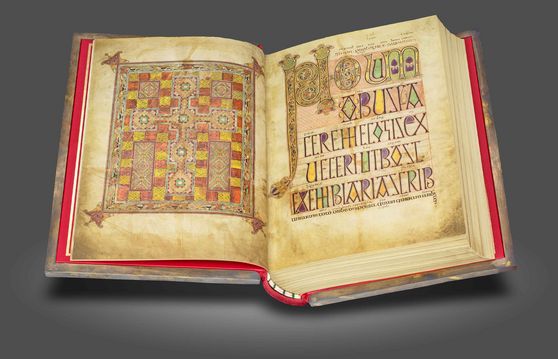
Golden miniatures and a famous portrait for the Emperor: an opulently decorated Ottonian masterpiece from the famous scriptorium of the Reichenau monastery
Monastery of Reichenau (Germany) — Shortly after 997
Experience more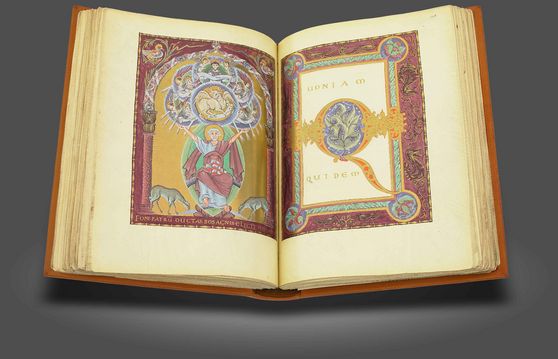
Contains the oldest surviving illumination of the Crucifixion: the Byzantine Gospel Book completed in 586 by the scribe Rabbula and magnificently illuminated with seven full-page miniatures and beautiful canon tables
Monastery of St. John of Zagba (Syria) — 586
Experience more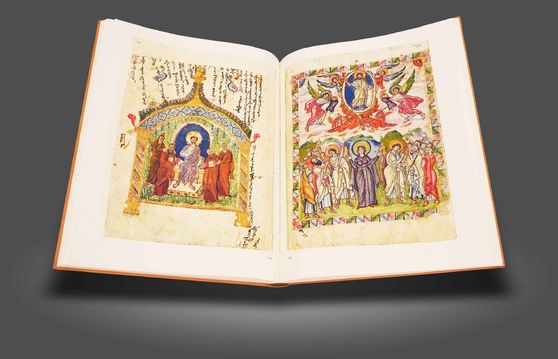
The "founding work" of the Austrian National Library, written entirely in gold ink, with its magnificent original binding: a Bohemian Codex Aureus with breathtaking historiated initials and miniatures
Bohemia (Czech Republic) — 1368
Experience more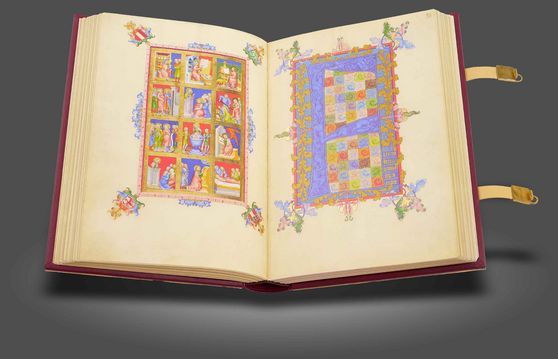
Made at Reichenau by order of Germany's only canonized emperor: one of the most beautiful, splendid, and largest masterpieces of Ottonian illumination for Henry II
Monastery of Reichenau (Germany) — 1007–1012
Experience more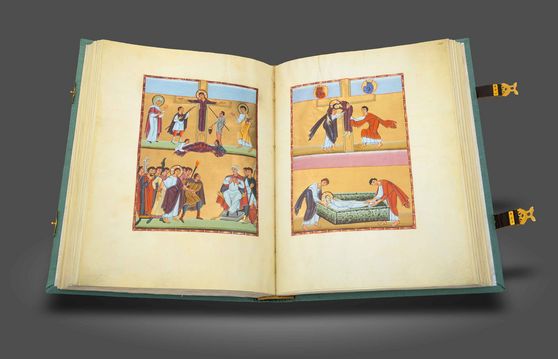
The first masterpiece of Charlemagne's world-famous court school and thus a cornerstone of the Carolingian Renaissance: the magnificent evangelistar by the scribe Godescalc, finished in gold and purple
Germany — 781–783
Experience more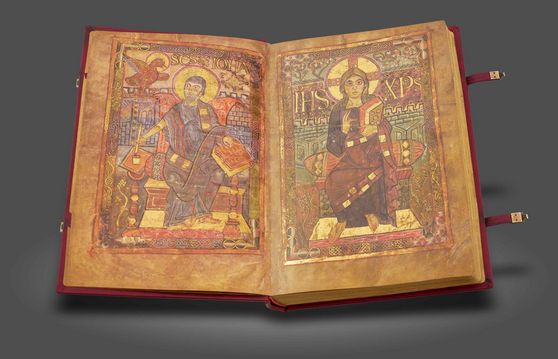
Created in the palace school of Charles the Bald and the cornerstone of the famous scriptorium of Regensburg: uniquely complex ornamentation and magnificent miniatures in a golden luxury codex from the Early Middle Ages
Abbey of Saint-Médard de Soissons (France) and Abbey of St. Emmeram, Regensburg (Germany) — Ca. 870 and 975–1000
Experience more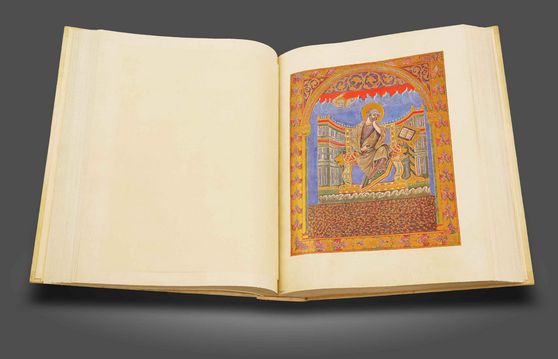
70 golden miniatures and texts from the New Testament in an exquisite robe of 12 masterful ivory plates: a magnificent treasure of Ottonian illumination in every respect
Monastery of St. Peter, Salzburg (Austria) — Around 1020
Experience more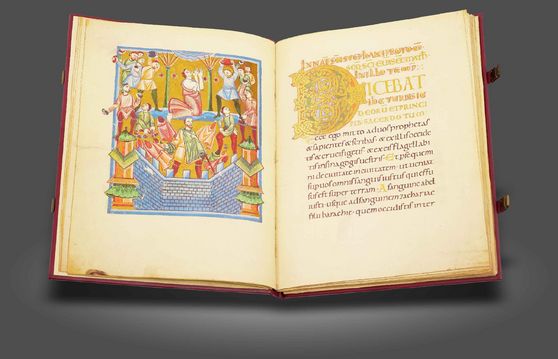
The "Queen of Bible Texts", adorned with a series of early medieval miniatures and an impressive ivory binding: an extremely accurate and early 5th century Old Armenian translation of the Bible
Monastery of Noravank (Armenia) — Ca. 989
Experience more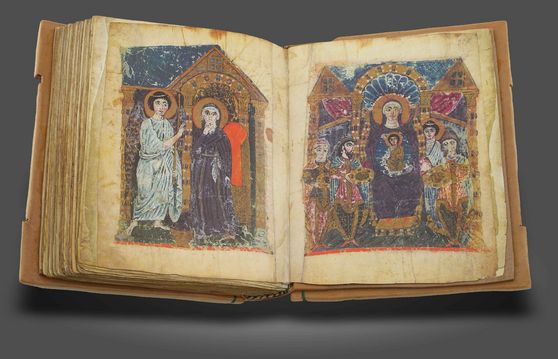
A late Codex Aureus from the rich Mainz cathedral treasure as a model for Johannes Gutenberg: The four holy gospels written with golden ink and adorned with 71 luminous miniatures in the fascinating early gothic jagged style
Mainz (Germany) — 1230–1250
Experience more